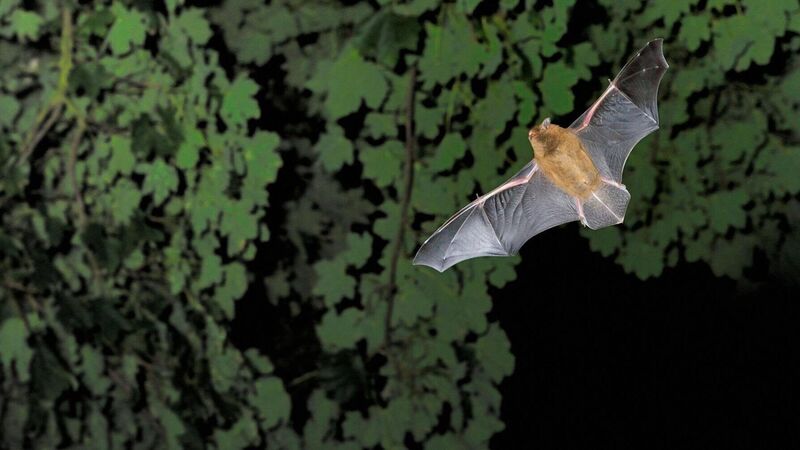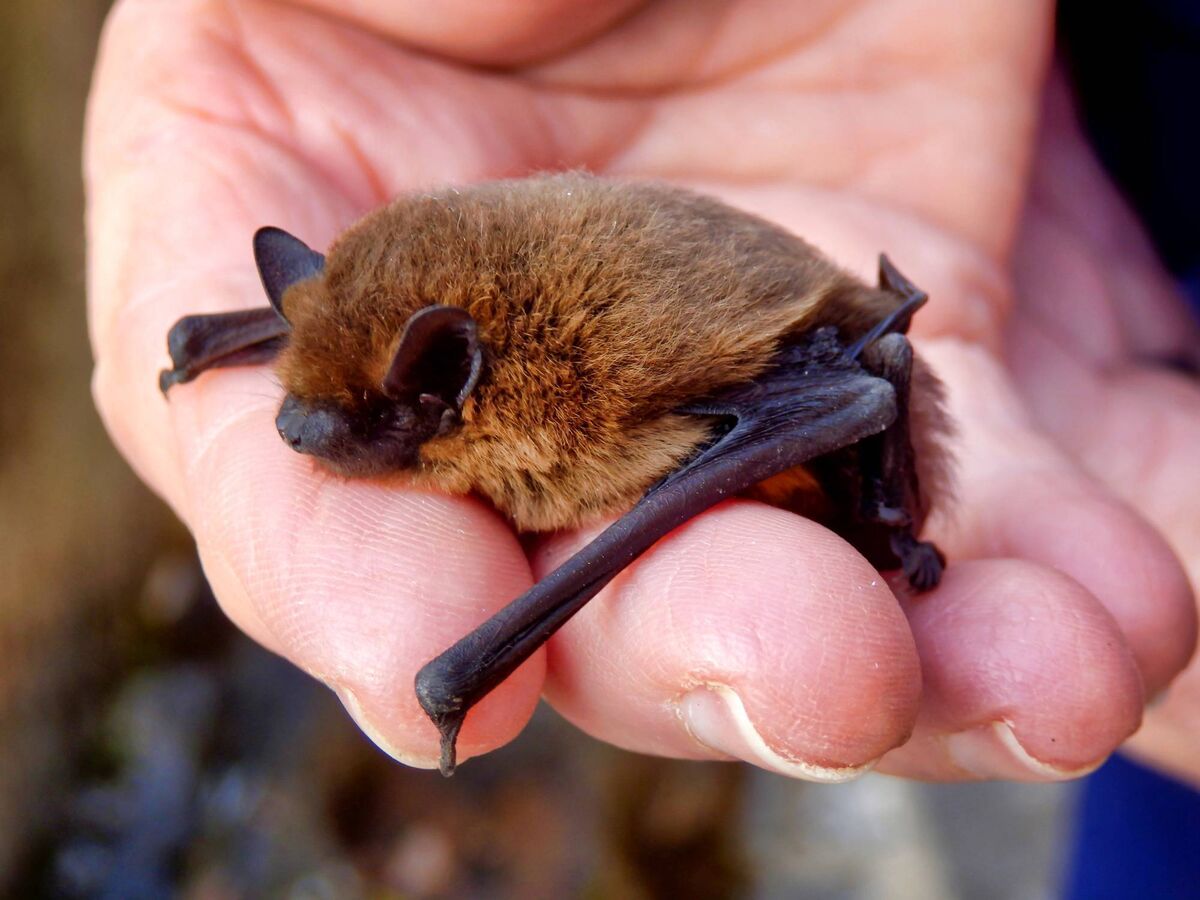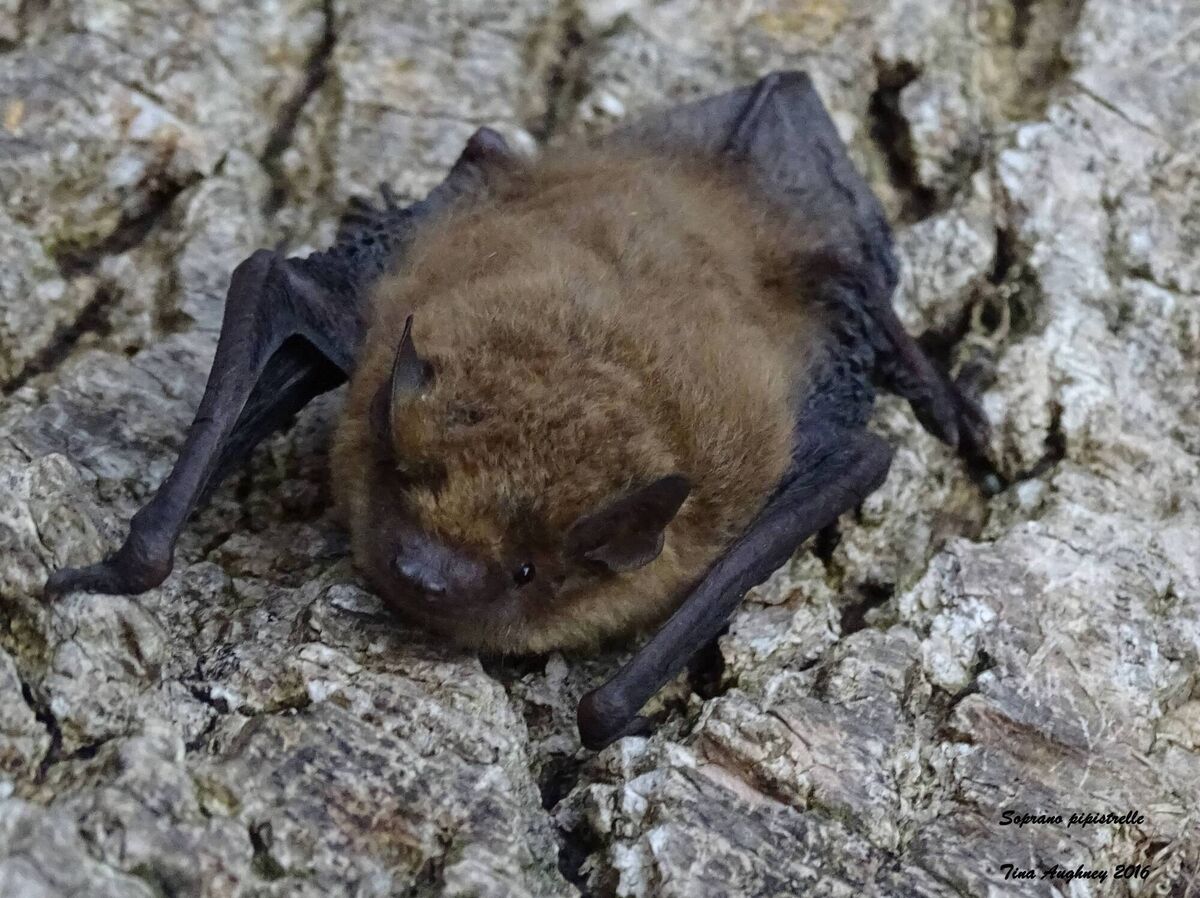Anja Murray: 'Hang out' with bats — they're fascinating creatures

Common Pipistrelle Bat (Pipistrellus pipistrellus) hunting at twilight: In Ireland, we have nine species of bats, all of which eat only insect prey
Bats are one of my favourite animals. At least part of their appeal is the extraordinary ways in which bats have evolved to fill unique ecological niches, by way of traits that have fascinated evolutionary biologists for centuries.
Bats are the only group of mammals that have developed the ability to fly. As mammals, they have hands that are not dissimilar to a human hand, though four of the fingers are elongated with a wing membrane stretched between them. Watching bats at dusk it becomes quickly apparent how agile they are in flight, manoeuvring with precision as they navigate through the gaps between tree canopies and swerving to snatch up insect prey.
As we have all learned in school, bats have also evolved the remarkable capacity to ‘see’ in the dark using echolocation. Bats have been described as being ‘incredibly good at physics’, a nod to their aptitude for taking measure of the distance between themselves and the many objects that they share airspace with, by monitoring the strength of the echo of soundwaves they produce as they come bouncing back at them. This is how bats ‘see’ the dimensions of trees, towers, bridges, moths and midges. The precision with which they calculate the velocity of moving prey, in three-dimensional airspace, is particularly impressive.
It is their ability to fly and their skill at hunting in darkness that has allowed bats to fill the ecological niche that is the night shift on aerial insect eating. When swifts, swallows, and other avian insectivores wind down for the night, bats emerge to gobble up the bounty of night-flying midges, flies, and moths.
Another mammalian trait is that bats care for their young until they can fend for themselves and maintain lifelong family bonds. At the start of summer, females gather in a suitable attic space, or somewhere that’s warm, undisturbed, and close to good foraging grounds for flying insects. Together, they form what is known as a nursery or maternity roost, and each gives birth to a single baby bat around late June or early July.

Now as we move into August, many of this year’s newborns are still suckling milk from their mammies whilst gradually learning the skills they will need to live independently. It will take six or seven weeks after birth for the young to go their own way.
Females and youngsters leave the maternity roost during August when summer is at its most fecund and they can build up a store of body fat that will enable them to survive the winter.
August is also the time when females seek out males to mate, though she is able to retain the sperm through the winter, only ovulating and becoming pregnant next spring, after hibernation.
I’ve often encountered evidence of a busy maternity roost in the form of scattered butterfly wings in the loft space of an old shed or outbuilding. The bats are clearly more interested in the succulent bodies of the butterflies, not caring much for the wings.
In Ireland, we have nine species of bats, all of which eat only insect prey. There is much we can do to help them, including managing our gardens, farms, and buildings with bats in mind. For gardens, reducing the frequency of mowing and having more native trees and bushes will enhance the diversity and quantity of flying insects that bats depend on, and help lots of other wild species too. For shelter and roosting, bats depend on ivy-clad trees, so do leave ivy in place. Ease up on the use of pesticides, including herbicide sprays, as these will always reduce the richness of flying insects.

In landscapes where intensive agriculture dominates, there is a special need for wildlife-friendly gardens, hedges, and woodland patches, each of which can provide an oasis of food and shelter in what is otherwise inhospitable terrain. Where the land is managed purely for productivity, resulting in little but monocultures of ryegrass, habitats for pollinators and other flying insects are few and far between. In turn, bats and insectivorous birds struggle to survive. By contrast, semi-natural and species-rich grassland habitats, as well as woodlands, tall, healthy hedges, ponds, and wetlands are all habitats in which the diversity of wild plants provides resources that flying insects and other wildlife need to thrive.
Increased artificial light at night, including ‘always on’ night lighting on roads, bridges, and flood-lit sports grounds and car parks can seriously disorientate bats. Planners, engineers, architects, and developers — take note: Bats are protected species, making it illegal to disturb them in their roosting and resting spaces. If there are bats in the attic, leave them be, and if works are planned that might disturb them, make sure to consult with the National Parks and Wildlife Service (NPWS).
Extended spells of cold and rainy summer weather, such as we have had these past few weeks, make it challenging for bats to be out and about catching enough insect prey to sustain them. It can be a struggle for adults and young alike to build up the reserves of body fat that they will need to make it through the winter months. Protecting and even restoring whatever patches of biodiverse habitat we can offer much-needed respite for bats through this challenging summer weather.
If you are sufficiently intrigued by bats and want to learn more, there are lots of options to engage. Find out if there is a bat walk taking place near you, perhaps during National Heritage Week. Listening to the sounds of echolocation on a bat detector is a revelatory and unforgettable experience! You might also like to volunteer, as a citizen scientist, to survey bats in your area. You will need a bat detector, or a loan of one from the library of bat detectors available from Bat Conservation Ireland, and some training to get started.
For more information see batconservationireland.org








